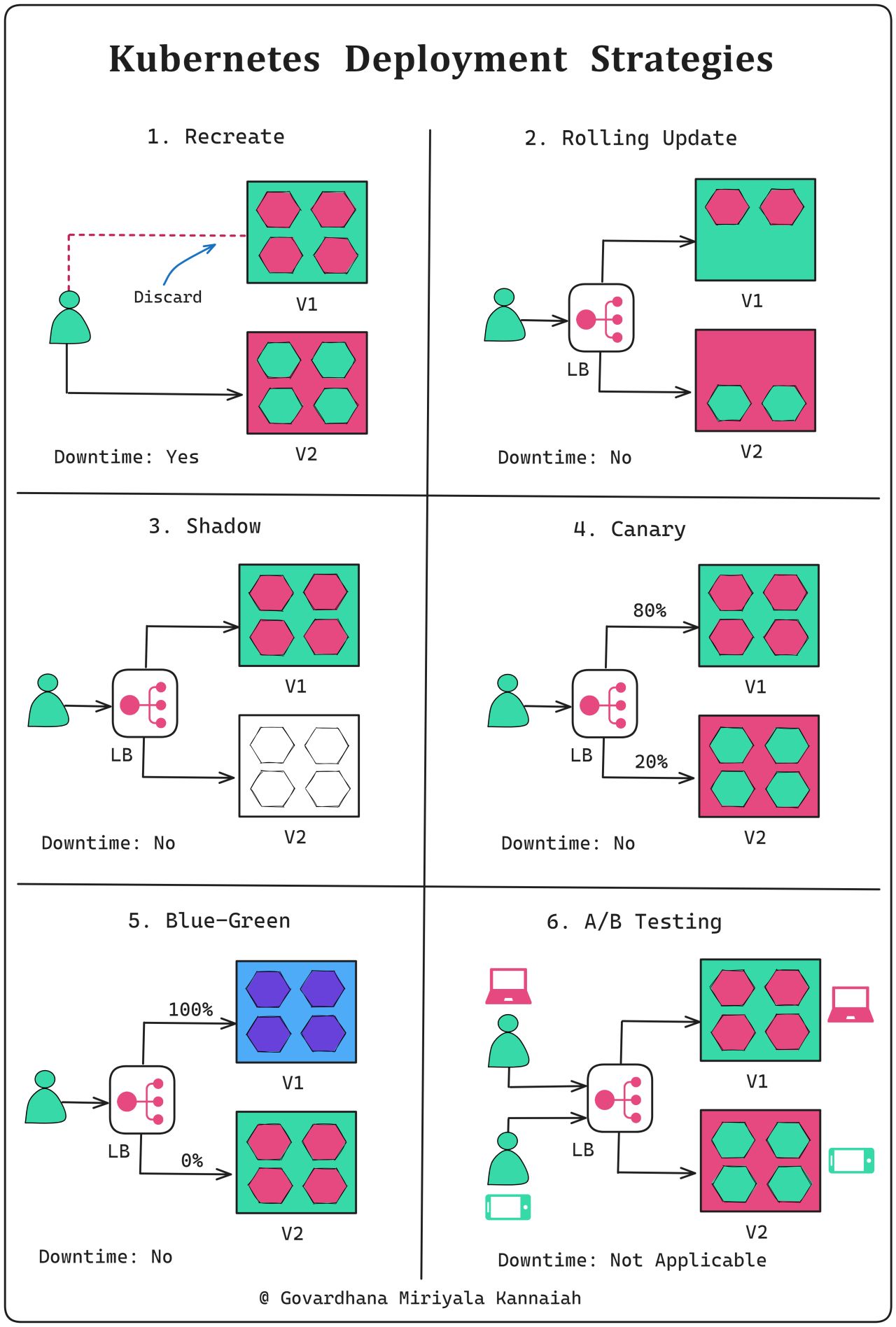Explore Kubernetes deployment strategies for seamless application updates.

Each strategy offers a unique approach to manage updates.
All existing instances are terminated at once, and new instances with the updated version are created.
Application instances are updated one by one, ensuring high availability during the process.
A copy of the live traffic is redirected to the new version for testing without affecting production users.
This is the most complex deployment strategy and involves establishing mock services to interact with the new version of the deployment.
The new version is released to a subset of users or servers for testing before broader deployment.
Two identical environments are maintained: one with the current version (blue) and the other with the updated version (green).
Traffic starts with blue, then switches to the prepared green environment for the updated version.
Downtime: No
Use case: High-stake updates
Multiple versions are concurrently tested on different users to compare performance or user experience.